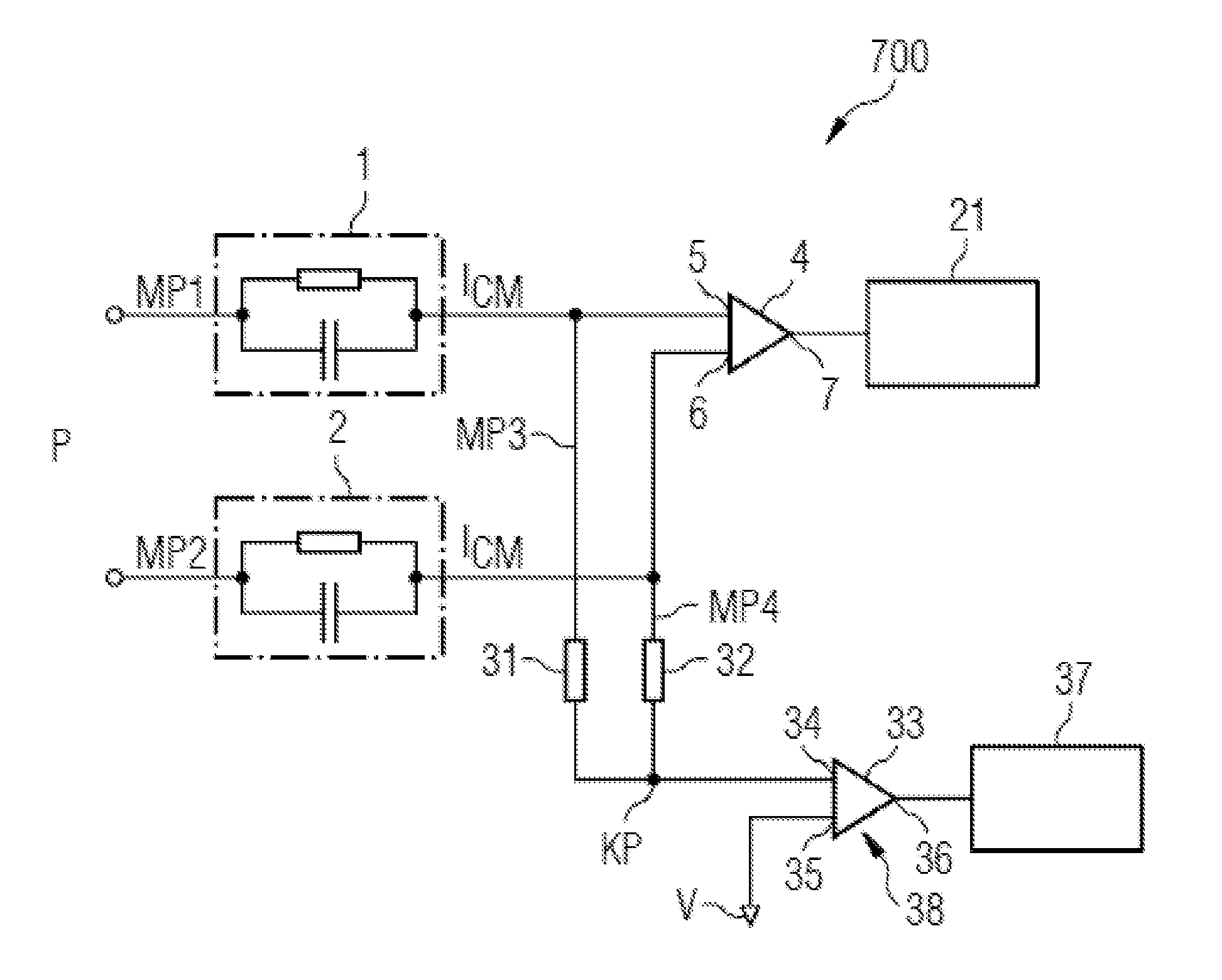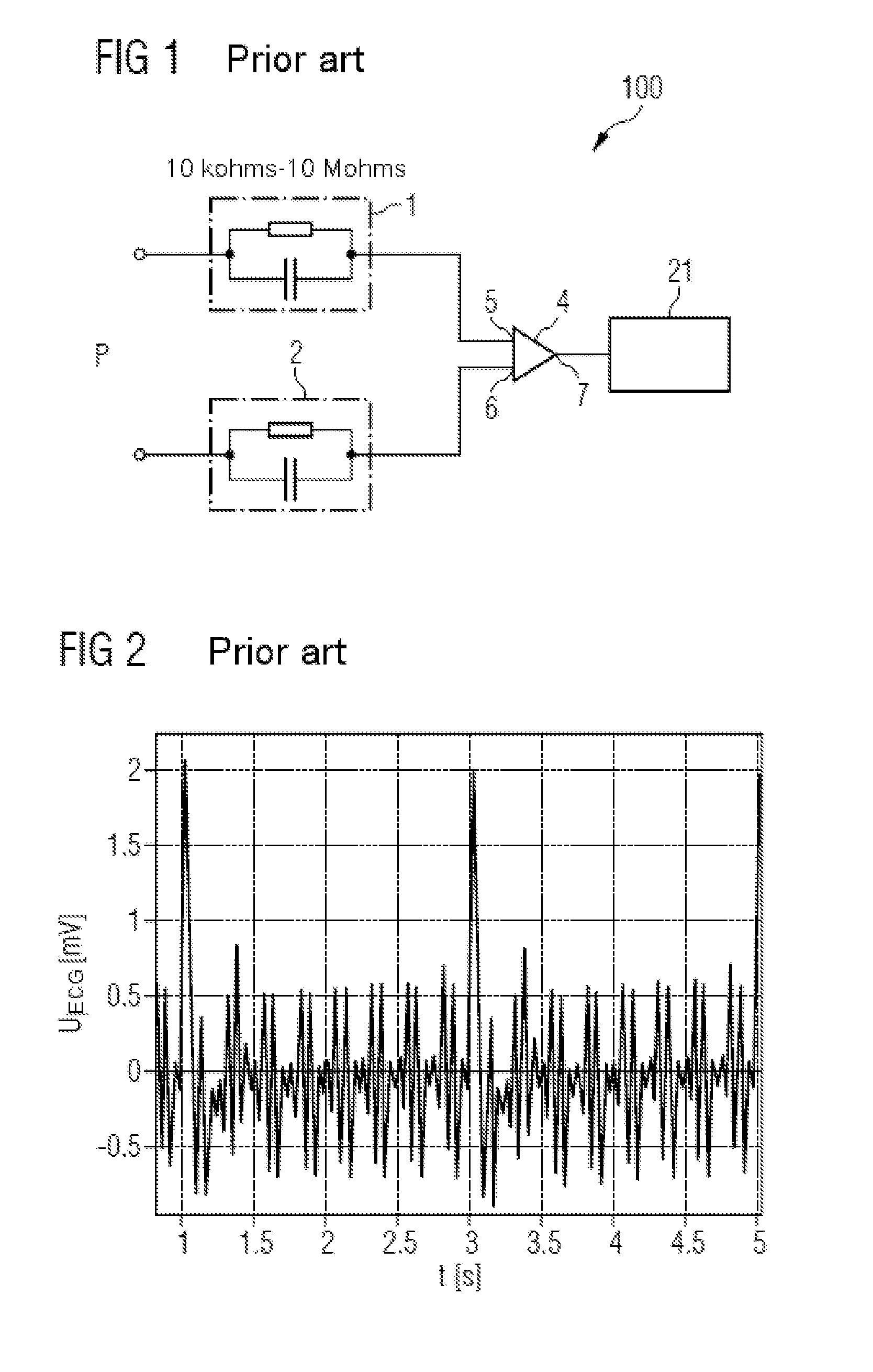Rejection of the common-mode signal component in the measurement of bioelectric signals
a bioelectric signal and common-mode signal technology, applied in the field of differential voltage measuring system, can solve the problems of rare longer possible evaluation of ecg signal, attenuation of useful signal, and common-mode interference signal, and achieve the effect of eliminating differential components
- Summary
- Abstract
- Description
- Claims
- Application Information
AI Technical Summary
Benefits of technology
Problems solved by technology
Method used
Image
Examples
Embodiment Construction
[0044]In FIG. 1, a conventional circuit arrangement 100 for measuring an electrocardiogram (ECG) of a patient P is depicted. The circuit arrangement 100 includes a first electrode 1 and a second electrode 2, which are in contact with the patient P in such a way that a cardiac current may flow by way of the electrodes 1, 2 to a differential amplifier 4. The amplifier 4 includes a first input 5, a second input 6 and an output 7. The first input 5 is electrically connected to the first electrode 1 and the second input 6 is electrically connected to the second electrode 2. The output signal of the amplifier 4 is transmitted to a signal detection unit 21, which detects the signal amplified by the amplifier 4. The two electrodes 1 and 2 are symbolized by an RC element, which illustrates the impedance values of the first measuring path and the second measuring path. In this case, the first measuring path runs from the contact of the first electrode 1 to the patient P by way of the first el...
PUM
 Login to View More
Login to View More Abstract
Description
Claims
Application Information
 Login to View More
Login to View More - R&D
- Intellectual Property
- Life Sciences
- Materials
- Tech Scout
- Unparalleled Data Quality
- Higher Quality Content
- 60% Fewer Hallucinations
Browse by: Latest US Patents, China's latest patents, Technical Efficacy Thesaurus, Application Domain, Technology Topic, Popular Technical Reports.
© 2025 PatSnap. All rights reserved.Legal|Privacy policy|Modern Slavery Act Transparency Statement|Sitemap|About US| Contact US: help@patsnap.com



